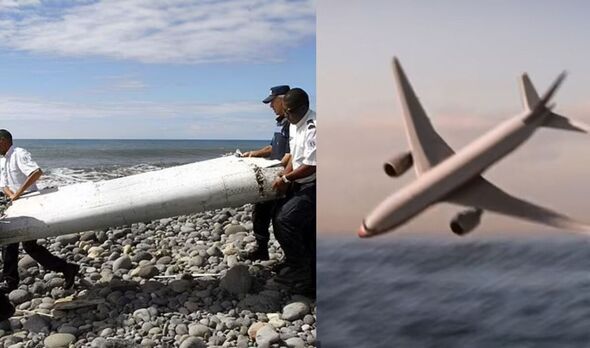The mystery surrounding the disappearance of the Malaysia Airlines Flight MH370 could finally be solved after 10 years as British researchers have detected a signal that may lead them to the plane’s final resting place.
The aircraft, which had 239 people on board, is believed to have run out of fuel and crashed into the Indian Ocean after it went off course from Kuala Lumpur to Beijing on March 8 2014. Despite extensive searches of an area of over 46,000 square miles, no trace of the plane’s location has been found, other than 18 washed-up fragments.
Earlier this year, around the time of the 10th anniversary of the disappearance, the Malaysian government backed a new “no find, no fee” search off the coast of Australia. This also proved unsuccessful.
Now, however, underwater microphones – hydrophones – have reportedly picked up a signal around the same time as MH370 is believed to have crashed. The six-second signal was discovered by researchers from Cardiff, who said that further tests would be needed to determine whether these sounds could lead to the crash site being found.
The researchers based their study on the assumption that a Boeing 777 aircraft like MH370 would release kinetic energy equivalent to a small earthquake if it crashed at a speed of 200 metres per second.
Such energy would have been big enough to be recorded by hydrophones thousands of miles away, two of which – in Cape Leeuwin in Western Australia and in the British territory of Diego Garcia – were only tens of minutes’ signal travel time away from where the plane’s last radar contact happened.
The hydrophones were set up to detect any violations to the Comprehensive Nuclear-Test-Ban Treaty. Hydroacoustic stations such as these had previously detected distinctive pressure signals from aircraft crashes, as well as earthquakes at distances of more than 3,000 miles away.
The new signal detected during the crash time window was only recorded at the Cape Leeuwin stations, which, according to Dr Usama Kadri, “raises questions about its origin”, he told the Telegraph. He said that while the reading was not conclusive, it was “highly unlikely” that the highly sensitive hydrophones would have missed the impact of a large plane crashing into the ocean. His team believes that further research might solve the mystery.
Hydrophones were used to help locate the ARA San Juan, an Argentinian navy submarine that was found over 900 metres below sea level in the South Atlantic Ocean a year after it imploded and vanished. To locate the wreck, researchers used grenades to emulate the explosion of the submarine and compared that to the signal picked up when it imploded. The wreck was then located 290 miles off the coast of Argentina.
Dr Kadri suggested that a similar experiment could be conducted to find the MH370. If such explosions show similar pressure amplitudes to the detected signal, it “would support focusing future searches on that signal”.
“If the signals detected at both Cape Leeuwin and Diego Garcia are much stronger than the signal in question, it would require further analysis of the signals from both stations,” he told the Telegraph.
“If found to be related, this would significantly narrow down, almost pinpoint, the aircraft’s location.”
However, if the signal were to be deemed unrelated, it would show that authorities might have to reassess the location and time frame of the expected crash used as starting points for searches so far, Dr Kadri added.
Britain had previously helped in the search as the London-based satellite company Immarsat found that one of MH370’s satellites was receiving hourly signals for seven hours after it vanished from military radar. This confirmed that the plane had remained in the air for much longer than previously thought, but did not give any indication of its location.
It was also at this point that the time of disappearance from military radars was revealed as 2.22am – over the Andaman Sea, which was west of the initial search area. Inmarsat’s data could calculate an estimate of the aircraft’s position based on how long transmissions between the plane and satellite took, and so produced a rough area after which the plane could have lost fuel or crashed.
This was revealed to be an arch stretching from Central Asia towards Antarctica, crossed around eight hours after takeoff. As the north of that area is a heavily militarised airspace, which would have detected the plane, it was deemed most likely that MH370 crashed into the Indian Ocean, at some time after 8.19am on March 8.
Dr Kadri added: “Unfortunately, we’ve been unable to find a signal with the certainty needed to launch a new search for the missing aircraft. However, if the recommendations are followed by the appropriate authorities, we can assess the relevance of the observed signals, potentially shedding light on the location of MH370.”
